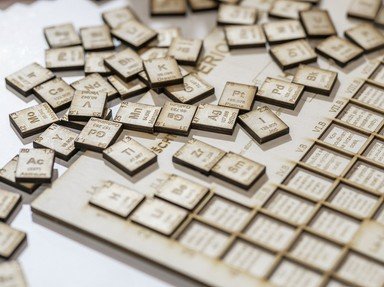Quiz Answer Key and Fun Facts
1. Carbon was discovered by Marie Curie.
2. Carbon is which of these?
3. Carbon-12, Carbon-13 and Carbon-14 are _______ of carbon.
4. In carbon compounds, catenation is _____?
5. The movement of the various forms of carbon in the environment is described by which of these?
6. Carbon allotropes consisting of 60 carbon atoms called fullerenes, are arranged in which of these?
7. Plastics made up of synthetic carbon polymers also may contain which of the following element(s):
8. Which is the most stable form of pure carbon?
9. From which element is Carbon-14 formed in nature?
10. Diamond is a good thermal conductor.
Source: Author
reenarage
This quiz was reviewed by FunTrivia editor
crisw before going online.
Any errors found in FunTrivia content are routinely corrected through our feedback system.

